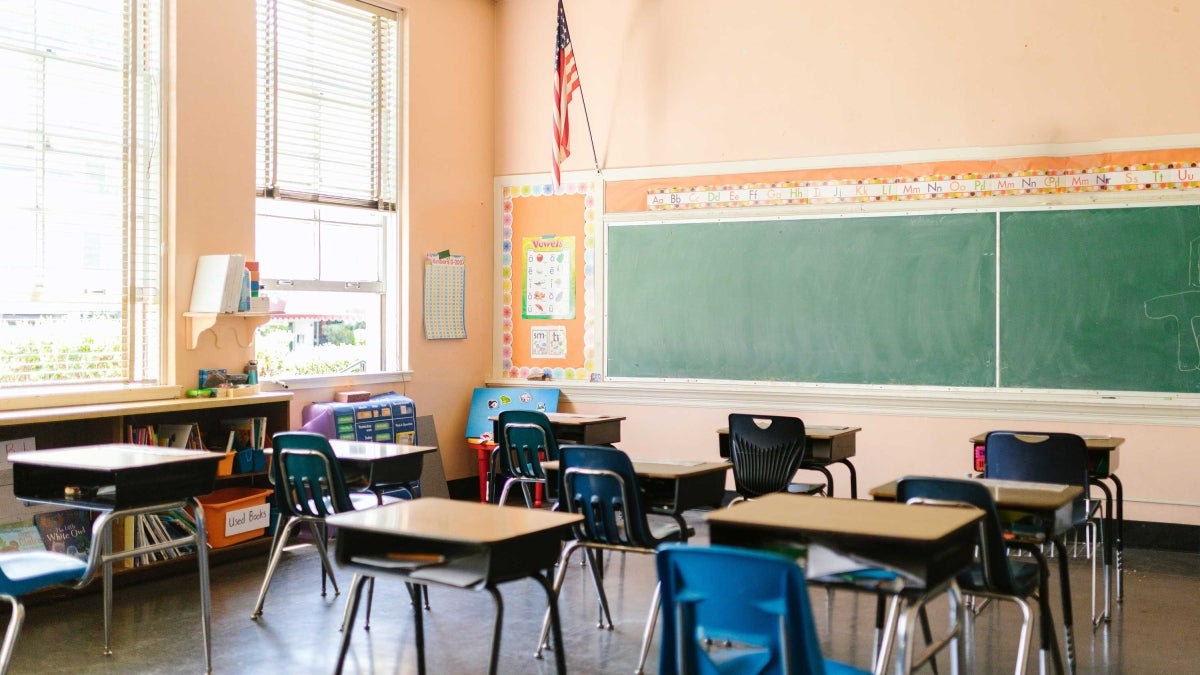In addition to a rise in school shootings, students, parents and teachers are dealing with another threat to the classroom: False shooting reports across the U.S. have become a recent trend in school safety.
Even when the report is false, young people must respond as if it was a real threat, potentially elevating cortisol levels and emotional responses, says Elizabeth Anthony, a child researcher and associate professor in the School of School Work at Arizona State University's Watts College of Public Service and Community Solutions. Anthony’s work examines children and adolescents exposed to environmental stressors and innovative ways to support families.
Over time, she says, young people can learn to protect themselves from this repeated elevated response through emotional numbing or ignoring the stimuli.
Since false reports of school shootings are a relatively recent phenomenon, researchers don’t exactly know yet how this impacts young people. But, Anthony says, we know from other traumatic events that suppressing feelings of fear and anxiety for any length of time can cause health and mental health problems, such as stomach pain, rapid heart rate, difficulty sleeping and recurring negative thoughts.
So what can adults do to calm the fear without desensitizing children? Here, Anthony provides some answers.
Elizabeth Anthony
Question: Are young people becoming desensitized to school shootings and possible threats on school grounds?
Answer: As a youth researcher who studies positive adaptation, I know that young people naturally adapt to the stress of exposure to school shootings and are capable of managing their emotional reactions. Young people can learn how to keep negative exposure from harming their psyche. I liken this process to how trauma professionals learn to keep their work from negatively impacting their personal health and well-being or how families responded to support one another during Hurricane Katrina.
Emotionally numbing can reduce distress and anxiety and may be psychologically helpful in the short term. This may, however, make a young person less likely to respond when a real threat is present. It is possible that young people are becoming desensitized to school shootings and possible threats on school grounds as we see an increasing number of shootings and threats of shootings.
What is fabulous about child and adolescent development is brain plasticity, or the ability to flexibly adapt to stimuli. Young people are more capable of neural adaptation than adults because their brains are still developing. Cognitive reappraisal, for example, helps children and teens re-interpret an emotion-eliciting situation in a way that makes it less distressing. The positive aspects of this adaptation can be accentuated by providing supportive environments for young people to experiment.
Q: How does desensitization harm children when it comes to a real threat?
A: Children need to learn what is a real threat versus a “fake” threat. When it comes to school shootings, every threat has to be taken seriously. While young people might not respond as quickly in a real threat because of repeated exposure, my educated guess is they will quickly figure things out and adapt in a real emergency. Young people naturally adapt to environmental stressors, but it becomes more difficult when the stressors overwhelm their regulatory systems.
Q: How do parents effectively communicate what’s happening without traumatizing and desensitizing children?
A: Parents can learn from responses to other traumatic experiences and natural disasters. It is not altogether different than how we speak to children about the war in Ukraine or violence in the community. First and foremost, parents can simply listen to kids and ask what they are experiencing and what questions they have.
Q: How should parents be contributing to safety education? And how does safety education differ between children and teenagers?
A: As parents, we can communicate at the development level of the child and not provide more information than they need. For example, what young children need to know versus an adolescent will vary based on their cognitive and emotional maturity. Teenagers typically view more social media than younger children and are therefore exposed to a wider variety of stimuli. Young people are naturally inquisitive; we can’t safeguard them from overexposure, but we can help them make good decisions about what information they take in and how they process that information.
Q: What does it mean to have a sense of agency? How do parents and educators help children develop it?
A: A sense of agency is a sense of control over one’s actions and their consequences. For example, the belief that if I study hard in school, I will get good grades gives me a sense of agency. When we have no control over the consequences of our actions, it can lead to paralysis or limited action. In the same example, if I study hard but do poorly on an assignment, I might not try as hard the next time.
Parents and educators can help young people develop a sense of agency by identifying their strengths and selecting activities that accentuate their strengths. Parents can also help young people identify areas where they can advocate for assistance. In regards to school safety, parents and educators can help young people use cognitive reappraisal skills to say, “School lockdowns are stressful, but I know how to respond to keep myself and my friends safe because I have practiced this before.”
Ultimately, we cannot control what happens in the environment, but we can control our responses. At the same time, my research seeks to change negative environments so young people don’t have to work so hard to control their responses. If we can make schools safer, I believe we absolutely should.
Q: On a related topic, you’ve worked with the Phoenix Elementary School Board on violence-reducing strategies for schools. Does “hardening” schools promote safety?
A: The research consistently indicates that “hardening” — specifically the use of metal detectors, bars on windows, armed guards, surveillance cameras, etc. — causes more harm than good. Hardening does not prevent school shootings and, in fact, makes schools more like prisons than learning environments. Commonsense strategies such as limiting entrances to schools and requiring name badges are helpful in promoting school safety. On the other hand, more aggressive approaches such as armed police officers and surveillance cameras interrupt the learning environment and make it more likely that Black and Latino youth will be targeted for discipline.
School shootings are not particularly different from other shootings we see in churches, grocery stores and other presumably safe environments. Effective violence prevention examines all aspects of the problem. Strategies such as limiting who has access to certain types of guns, mental health screening, commonsense lockdown drills and increasing school staffing can reduce the negative impacts of violence in schools.
More Arts, humanities and education

ASU professor's project helps students learn complex topics
One of Arizona State University’s top professors is using her signature research project to improve how college students learn science, technology, engineering, math and medicine.Micki Chi, who is a…

Award-winning playwright shares her scriptwriting process with ASU students
Actions speak louder than words. That’s why award-winning playwright Y York is workshopping her latest play, "Becoming Awesome," with actors at Arizona State University this week. “I want…

Exceeding great expectations in downtown Mesa
Anyone visiting downtown Mesa over the past couple of years has a lot to rave about: The bevy of restaurants, unique local shops, entertainment venues and inviting spaces that beg for attention from…



